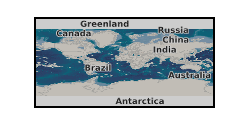Traps (petroleum)
Type of resources
Topics
Keywords
Contact for the resource
Provided by
Formats
Update frequencies
-

We investigated the physical basis of this weakened trapping using pore scale observations of supercritical CO2 in mixed-wet carbonates. The wetting alteration induced by oil provided CO2-wet surfaces that served as conduits to flow. In situ measurements of contact angles showed that CO2 varied from nonwetting to wetting throughout the pore space, with contact angles ranging 25° <θ< 127°; in contrast, an inert gas, N2, was nonwetting with a smaller range of contact angle 24° <θ< 68 °. Observations of trapped ganglia morphology showed that this wettability allowed CO2 to create large, connected, ganglia by inhabiting small pores in mixed-wet rocks. The connected ganglia persisted after three pore volumes of brine injection, facilitating the desaturation that leads to decreased trapping relative to water-wet systems. This data is associated with this open access publication: Environ. Sci. Technol. 2016, 50, 18, 10282-10290. https://doi.org/10.1021/acs.est.6b03111.
 NERC Data Catalogue Service
NERC Data Catalogue Service